Venice Biennale 2024: far too many dead artists, and not enough panache
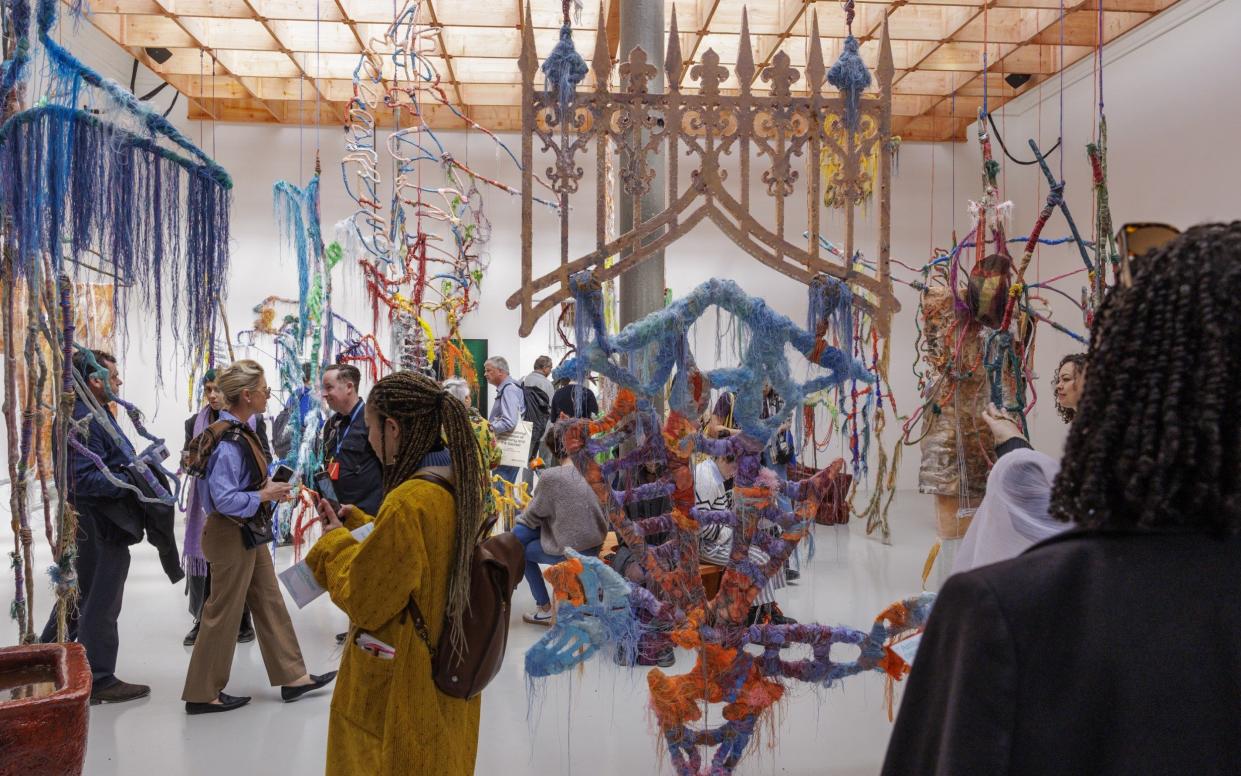
Someone needs to say it: this hasn’t been a vintage year for the Venice Biennale. Foreigners Everywhere, the 60th edition of its international exhibition, arranged across the Central Pavilion in the Giardini and the cavernous Arsenale, may have a witty title, in the context of a city that profits so relentlessly from tourism. Yet it proves a disappointment, with far too many dead artists (isn’t the biennale supposed to be about contemporary art?), and not enough panache.
Its Brazilian curator, Adriano Pedrosa, celebrates artists from the Global South, along with other “foreigners” or outsiders including queer and indigenous artists as well as the self-taught. Tellingly, though, he came up with that title years ago, and his vision now feels stale. Western museums have been recalibrating themselves along these lines for at least a decade; several of Pedrosa’s “discoveries” – Saloua Raouda Choucair, Wifredo Lam, Fahrelnissa Zeid – have had solo exhibitions at the Tate.
Massimiliano Gioni’s brilliant 2013 biennale, The Encyclopedic Palace, also took “outsider” art as its theme, and articulated a lot of Pedrosa’s concerns with greater eloquence and flair; textiles are a “motif”, says Pedrosa, but they’ve been done to death in shows elsewhere. Where are the new ideas?
Moreover, Pedrosa champions too much pedestrian historical work for reasons of inclusivity rather than aesthetic merit: a salon-hung room of mediocre portraits is particularly feeble. The result is tired, not inspired, and unintentionally patronising – even awkwardly anthropological – in tone.
The presentations inside the national pavilions fare better. Drama 1882, by Egypt’s Wael Shawky, is a powerful eight-part operatic film about the nationalist Urabi revolution that precipitated the British bombardment of Alexandria; it is, in a sense, a kind of keening, minor-keyed counterpart to Lin-Manuel Miranda’s hit musical Hamilton, performed in classical Arabic, with a sorrowful score and insidious atmosphere, and mesmerising, perpetually undulating choreography, suggesting the shadowy give-and-take of diplomacy and treacherous intrigue. Tackling today’s de-rigueur topic of colonial history (see also: this year’s on-point Nigerian and Beninese pavilions), but with stylised, plangent grace, it left me in bits, and, by the second preview day, was deservedly attracting long queues.
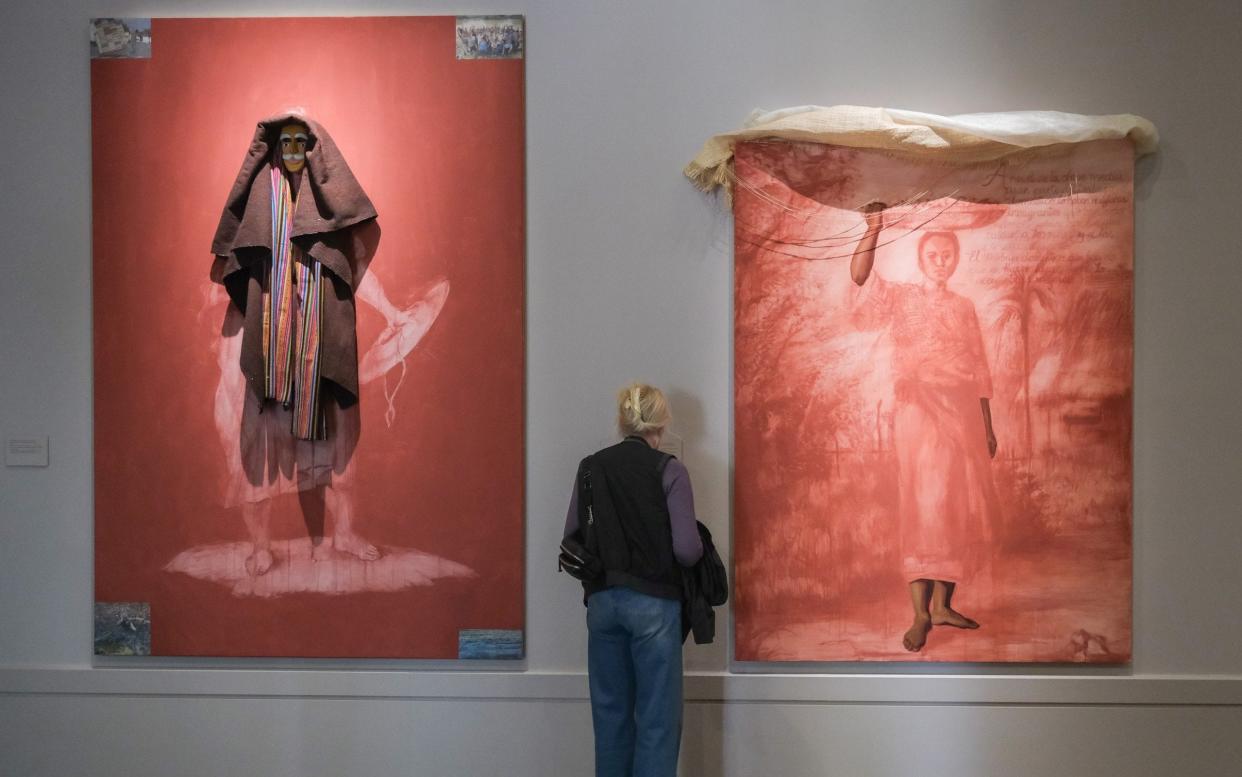
By comparison, Gulsun Karamustafa, representing Turkey, has been overlooked, but her commanding sculptures of mass-produced plastic moulds for concrete Corinthian columns ingeniously hollow out an ancient symbol of Western civilisation, and are similarly wise and poised.
Canada’s pavilion is transformed, both inside and out, by thousands of strands of blue-glass “seed beads” (or “trinkets”, as European traders called them) once used as currency; alluding to “transoceanic trade”, Kapwani Kiwanga’s installation has a subtle, whispering and rustling, understated beauty.
Inside Poland’s pavilion, an audio-visual installation by the Ukrainian Open Group collective presents survivors of the Russia-Ukraine conflict imitating the whines of missiles and detonations, to heart-breaking effect. Their wails and thumps – to which viewers are invited to, as it were, sing along, as if participating in a vicious round of karaoke – sound like children innocently playing war games.
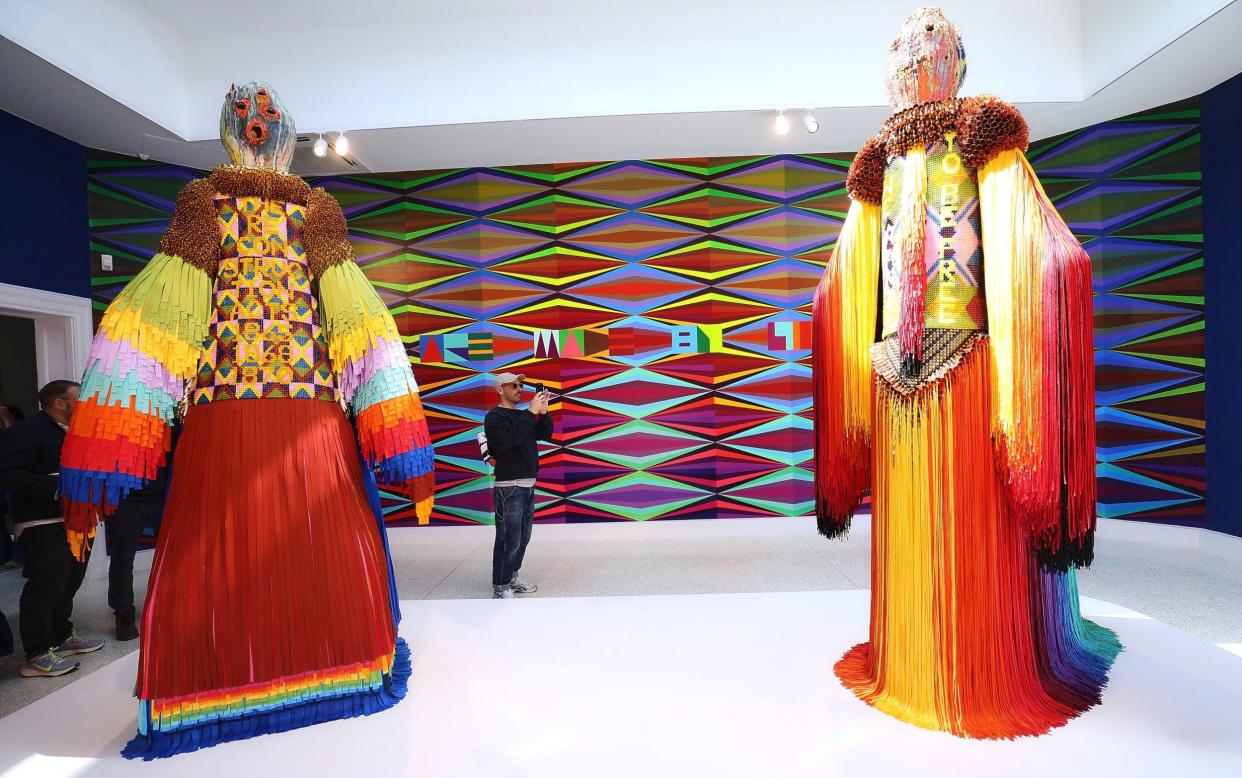
Various festive and feel-good, if somewhat frivolous, offerings counteract the tragedy – including Julien Creuzet’s colourful suspended sculptures, like coral reefs or intricate dream-catchers, which, accompanied by a subwoofer soundtrack, turn the French pavilion into a sort of chic, subaquatic party.
Otherwise, I look forward to encountering more of Japanese Yuko Mohri’s frisky kinetic sculptures involving plastic tubes and pieces of fruit, like strange experiments in a mad scientist’s laboratory; likewise, Iceland’s Hildigunnur Birgisdottir, whose blink-and-you’d-miss-it conceptual takedown of Western consumerism is original and smart.
Elsewhere, among the collateral events and exhibitions coinciding with the biennale, Yu Hong (commissioned by the National Gallery of Canada) and Berlinde de Bruyckere both offer memorable installations within Venetian churches; the latter’s ghoulish grey “archangels”, shrouded in animal skins, haunt Andrea Palladio’s San Giorgio Maggiore like Death Eaters.
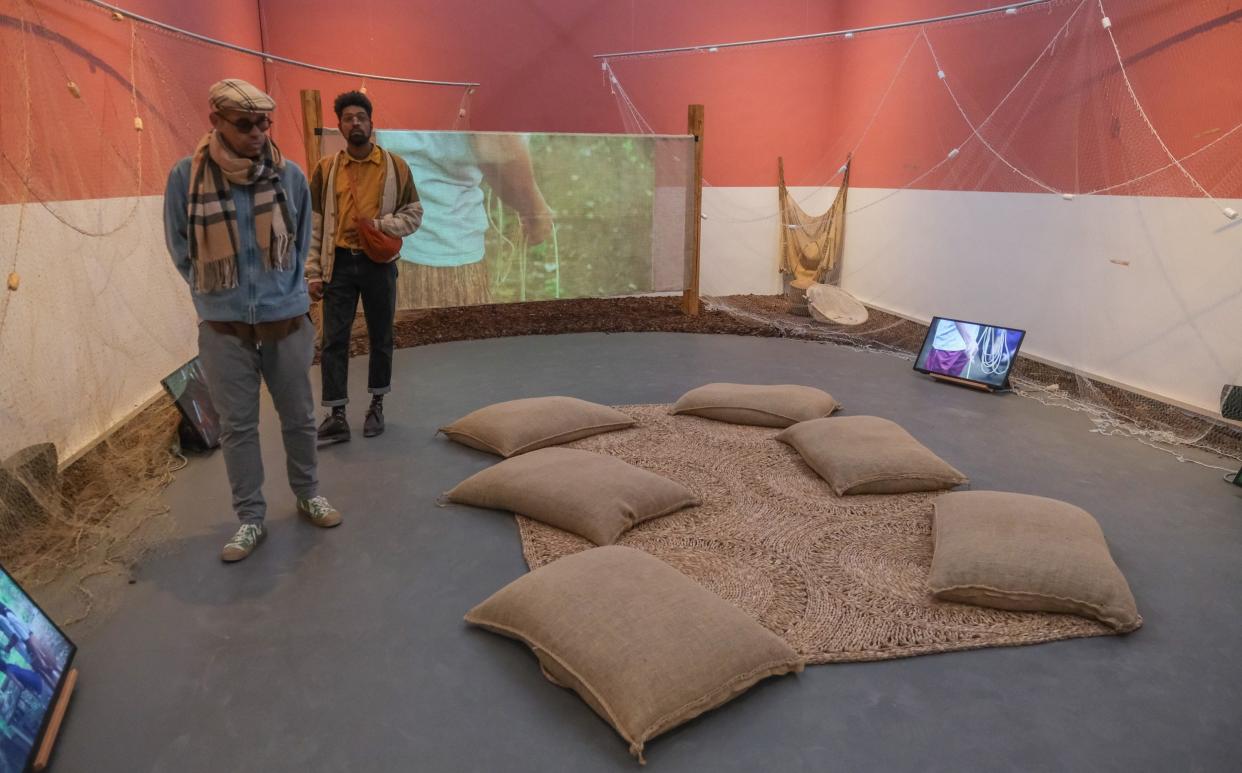
There are death’s-heads aplenty, too, across the lagoon, in a show of black-and-white photography by the American Peter Hujar, whose 1976 book, Portraits in Life and Death, juxtaposed the mummified denizens of Palermo’s catacombs (framed to appear like puppets in some macabre drama) with his own avant-garde friends, whom he often captured lounging around in bed, as if engaging the viewer in pillow talk.
The Peggy Guggenheim Collection’s exhibition about the modern French scenester and polymath Jean Cocteau is breezy and entertaining, with much curly-haired smut amid the classicism, even if I didn’t buy its revisionist thesis that this opium-addicted dabbler’s Picasso-lite drawings should be taken seriously.
And, while Pedrosa, in the main exhibition, finds room for only 10 artists born in the United States, there are several noteworthy shows devoted to colossi associated with mid-century America, including that self-proclaimed sign-painter Robert Indiana, whose crisp work strangely suits the corporate vibe inside the Procuratie Vecchie on St Mark’s Square.
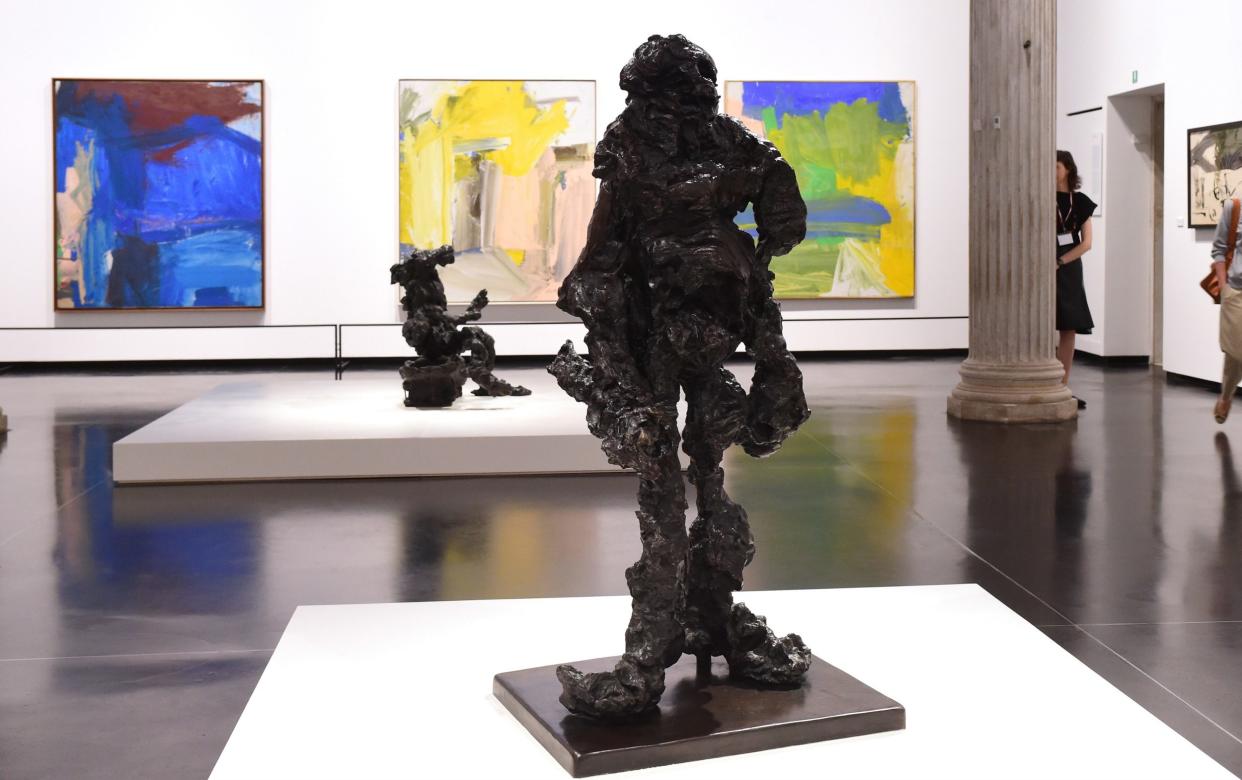
At the Fondazione Cini, 96-year-old Alex Katz presents three recent series of paintings, including several vast, glowing prairies, animated by flickering, twitching blades of grass, and a suite of hurtling and dynamic, nigh-on-abstract vistas of ominously black oceanic water specked with foam and spray, like midnight snowfall – the antithesis of hackneyed, evanescent visions of the Venetian lagoon.
And, at the Gallerie dell’Accademia, Willem de Kooning and Italy is an immaculately curated, dazzling tour de force, with satisfying bronze sculptures that appear as squidgy as mozzarella, paintings of carpaccio-coloured, spread-eagled figures, and gelato-coloured abstract canvases of phenomenal power that bespeak a sort of rapturous, holiday abandonment. Buon appetito!
Details: labiennale.org


